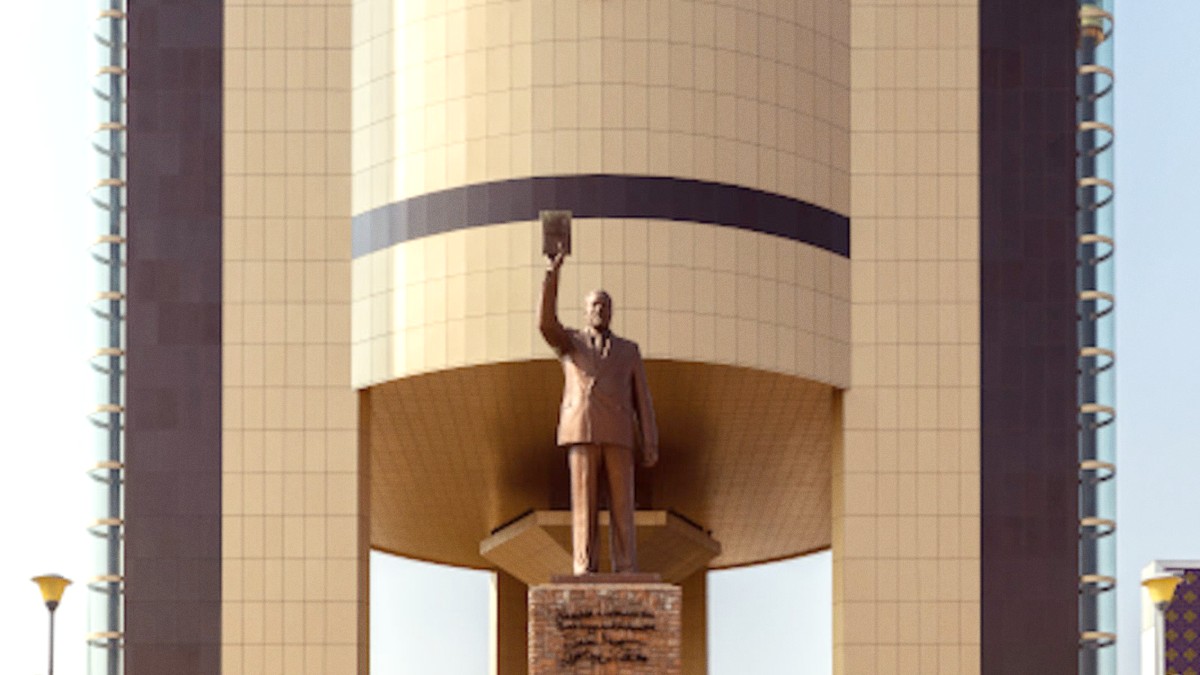
Western Namibia, Namibia
Swakopmund's climate is notably consistent compared to inland Namibia. The ocean's influence means extreme temperatures are rare.
Mornings often begin with a cool, dense fog that typically clears by midday, revealing clear, sunny skies. Rainfall is minimal, with very few rainy days. Humidity stays low, making warmer days comfortable. The ocean is at its "warmest" during this period, though it remains cold by most standards.
Swakopmund does not experience monsoons or hurricanes. Extreme temperatures are rare due to the ocean's moderating effect.
The most famous weather phenomenon is the coastal fog, especially prevalent in the mornings. This fog typically clears by midday, revealing sunshine. Strong winds can occur, especially in spring (September-October), which can create dusty conditions near the dunes.
(July - Oct & Dec - Jan)
Weather is ideal. Good wildlife viewing (inland). Full activity operation. Lively holiday atmosphere.
Accommodation prices higher. Fewer tour openings. More crowds. Advance booking needed.
(April - June & November)
Pleasant weather often. Fewer crowds. Better prices for flights and accommodation. Good for outdoor activities.
Some smaller establishments might have reduced hours. Weather can vary, with cooler days or stronger winds.
(February - March)
Fewest crowds for relaxed experience. Lowest prices for accommodation and tours. Good for desert activities.
Can be very hot if venturing far inland. Some stronger winds possible along the coast.
Swakopmund stays cool even when inland areas experience high temperatures. Marine life viewing remains good throughout the year regardless of coastal water temperatures.
Year-round. Shoulder seasons (April-June, November) avoid cooler coastal mornings or busiest periods. Mornings are best for cooler temperatures.
September to March have "warmest" water temperatures, feeling less chilly on boat trips. Marine life viewing is good year-round.
Year-round, as these bird populations are resident. Boat tours for seals and dolphins are generally good throughout the year.
Entry requirements vary based on your nationality.
Namibia has specific visa policies. Citizens of many countries enjoy visa-exempt status for short tourist stays, typically up to 90 days. These countries include South Africa, Germany, the United Kingdom, and most Southern African Development Community (SADC) countries. Citizens of other countries, including the United States, Canada, Australia, and New Zealand, usually need a visa prior to arrival.
Carry the following documents for Namibian entry to ensure a smooth arrival.
The official currency of Namibia is the Namibian Dollar (NAD), pegged 1:1 to the South African Rand (ZAR). Both currencies are legal tender throughout Namibia. You can use South African Rands interchangeably with Namibian Dollars for payments. However, South African Rand coins are sometimes not accepted, and if you pay in Rand, you will receive change in Namibian Dollars.
Daily costs in Swakopmund vary significantly based on your travel style. These are estimates and subject to fluctuation.
Budget Traveler:
Accommodation: NAD 250-500 (USD 13-26) for dormitory or basic guesthouse. Meals: NAD 200-400 (USD 10-20) for self-catering or local eateries. Transportation: NAD 50-100 (USD 3-5) for shared taxis. Activities: NAD 100-300 (USD 5-15) for budget options. Total: NAD 600-1300 (USD 30-65) per day.
Accommodation: NAD 2000-6000+ (USD 105-315+) for upscale resort. Meals: NAD 800-2000+ (USD 40-105+) for fine dining. Transportation: NAD 500-1500+ (USD 25-80+) for private drivers. Activities: NAD 1500-5000+ (USD 80-260+) for exclusive tours.
Total daily cost: NAD 4800-14500+ (USD 250-760+)
These are estimates and vary with market rates.
Hostel Dorm: NAD 250-400 (USD 13-20). Budget Guesthouse: NAD 500-800 (USD 26-40). Mid-range Hotel: NAD 1000-2000 (USD 50-100). Luxury Hotel: NAD 2500-6000+ (USD 130-315+).
Prices are per room for guesthouses/hotels.
Prices vary by season and booking time.
Local Snack: NAD 30-70. Casual Meal: NAD 120-250. Mid-range Main: NAD 250-450. Fine Dining: NAD 500-900+. Local Beer: NAD 30-50. Coffee: NAD 30-45. Dune boarding/Quad biking: NAD 800-1500. Marine cruise: NAD 700-1200. Living Desert Tour: NAD 800-1500.
Museum entry: NAD 50-100.
Transportation: Shared taxi NAD 20-40, Private taxi NAD 50-100.
| Strategy | Description | Benefit |
|---|---|---|
| Self-Catering | Use local supermarkets. Many guesthouses have kitchen facilities. | Significant savings over dining out for every meal. |
| Local Eateries | Choose smaller, local restaurants or takeaways. | Authentic, delicious meals at a fraction of the cost. |
| Shared Activities | Book group tours for quad biking, sandboarding, or marine cruises. | More budget-friendly than private excursions. |
Awareness of potential concerns and knowing how to access help is an important aspect of responsible travel planning.
Mandatory if arriving from or transited through a high-risk country.
Consult a travel health professional 4-6 weeks prior for Hepatitis A, B, Typhoid, etc.
Swakopmund itself is not a malaria risk area. Prophylaxis may be for northern Namibia travel.
Prevention is good for a comfortable trip.
Dehydration: Drink plenty of water. Sunburn: Use high-SPF sunscreen, wear a wide-brimmed hat, sunglasses, protective clothing. Reapply sunscreen frequently. Insect Bites: Use insect repellent. Food & Waterborne Illnesses: Practice good food and water hygiene. Drink bottled or purified water. Tap water in Swakopmund is generally safe to drink.
Consider [Neutrogena Ultra Sheer Dry-Touch Sunscreen SPF 70](https://www.amazon.com/s?k=Neutrogena+Ultra+Sheer+Dry-Touch+Sunscreen+SPF+70) for sun protection. Pack [Repel 100 Insect Repellent, 4 Ounce Pump Spray](https://www.amazon.com/s?k=Repel+100+Insect+Repellent%2C+4+Ounce+Pump+Spray) for insect protection.
Wash your hands often or use hand sanitizer.
Swakopmund has a public facility (State Hospital) and a private facility (Mediclinic Swakopmund). Mediclinic generally offers better facilities.
Several well-stocked pharmacies operate in town, providing over-the-counter medications.
Police: 10111. Ambulance/Medical Emergency (Swakopmund): 211111. E-Med Rescue 24 (Private Evacuation): 0811221111. Fire: 212000.
Swakopmund is generally a safe destination, especially in central tourist areas and along the beachfront. Exercising caution is wise.
Travel insurance for any Namibia trip is a good choice. A comprehensive policy covers various situations:
Emergency medical evacuation, transfers to equipped facilities or home country.
Cancellation/Interruption covers non-refundable expenses due to unforeseen events.
Compensation for lost/stolen/damaged luggage. Check for adventure activity coverage (quad biking, skydiving).